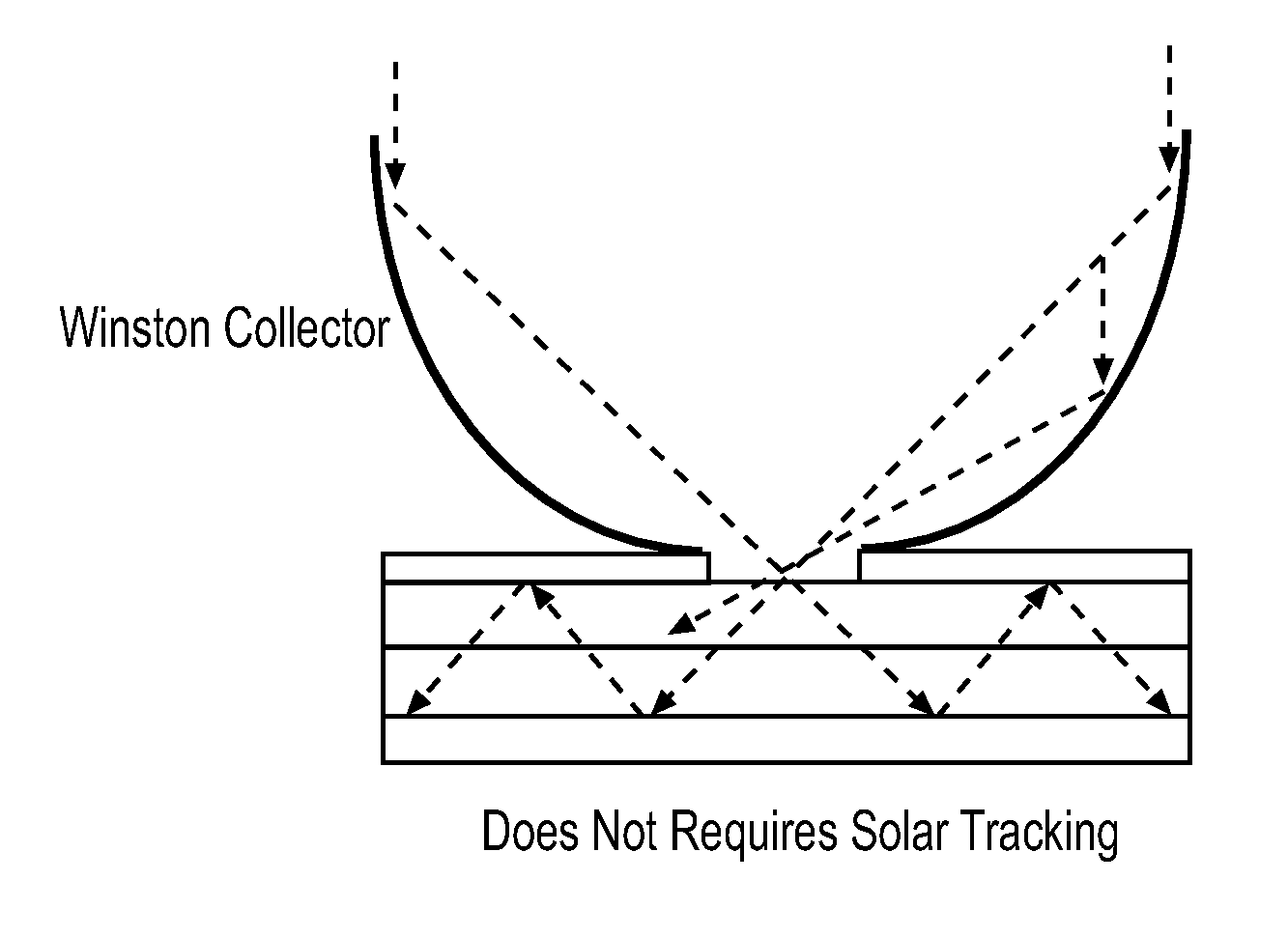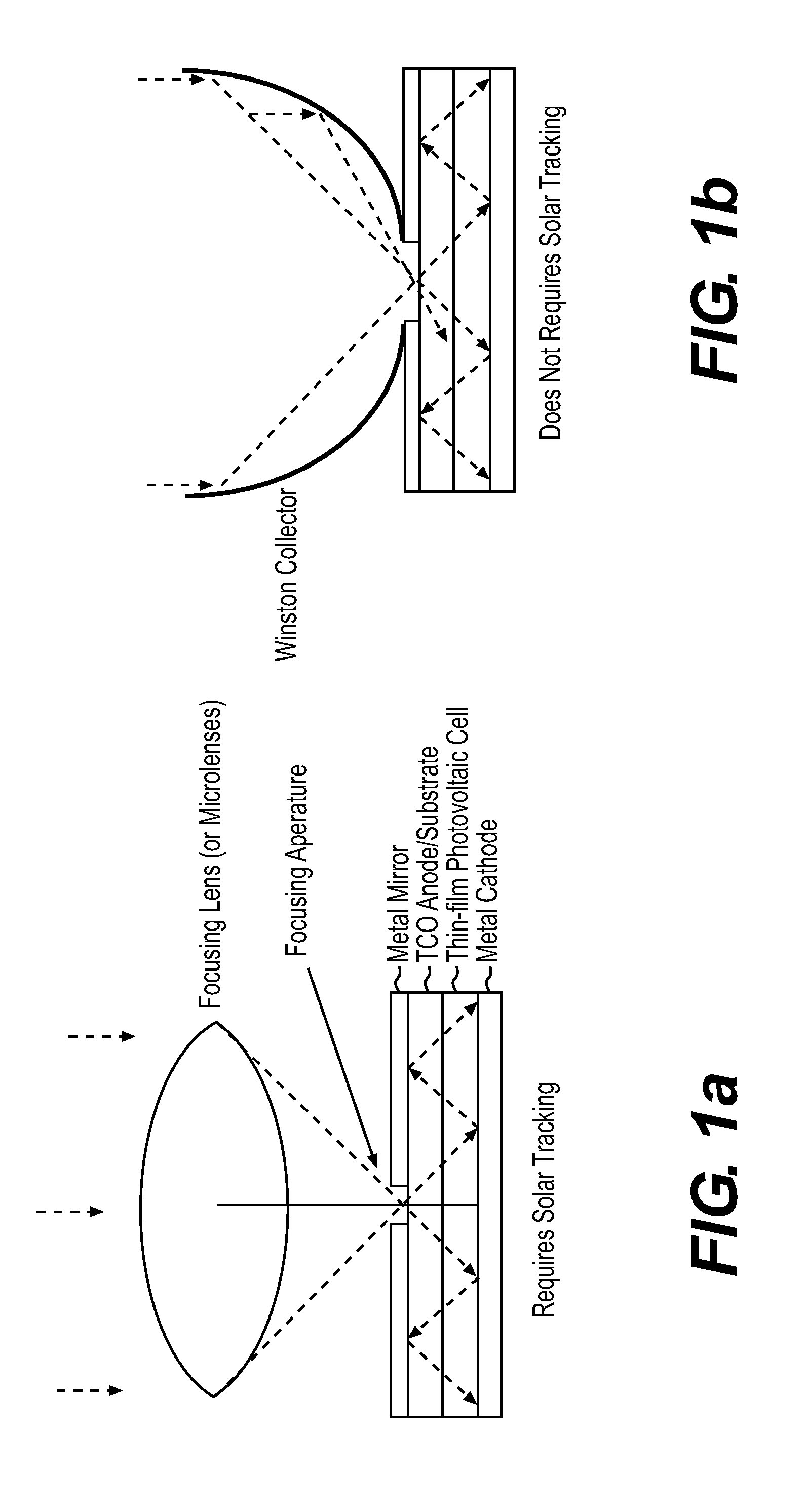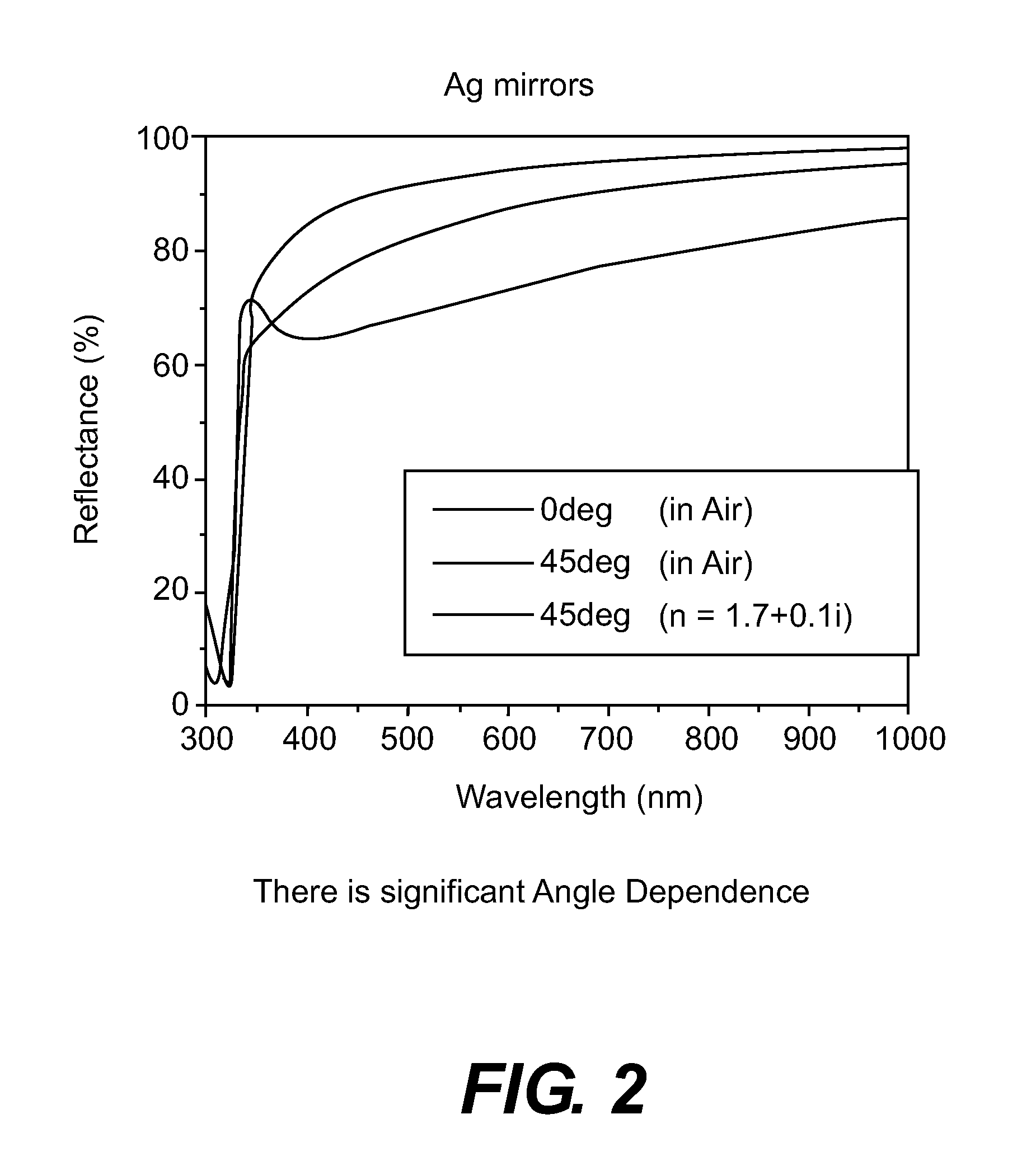Light trapping architecture for photovoltaic and photodector applications
a light trapping and photodetector technology, applied in the direction of instruments, optical elements, photoelectric discharge tubes, etc., can solve the problems of difficult and expensive production of efficient crystalline-based devices, low efficiency, and low efficiency of detection circuits, so as to increase the collection of light and high efficiency photoconversion
- Summary
- Abstract
- Description
- Claims
- Application Information
AI Technical Summary
Benefits of technology
Problems solved by technology
Method used
Image
Examples
Embodiment Construction
[0047]In FIG. 1, a cross-sectional view which can correspond to two different device structures is depicted. Both structures permit light to be introduced into a reflective cavity, or waveguide, containing photosensitive layers such that the light is initially incident in a direction generally perpendicular to the planes of the photosensitive layers. As a result, this type of structure is generally referred to herein as a “perpendicular type structure.”
[0048]Accordingly, light incident from the top of these embodiments enters into one or more concentrator structures (conical) or (trough-shaped). The light admitted to each concentrator is then reflected into an aperture or top reflective layer. The aperture is a generally circular shaped opening for use with a conical concentrator, and the aperture is a generally rectangular shaped opening for use with a trough-shaped concentrator. As the bottom surface layer is reflective, the top surface may be non-reflective and / or be optionally c...
PUM
 Login to View More
Login to View More Abstract
Description
Claims
Application Information
 Login to View More
Login to View More - R&D
- Intellectual Property
- Life Sciences
- Materials
- Tech Scout
- Unparalleled Data Quality
- Higher Quality Content
- 60% Fewer Hallucinations
Browse by: Latest US Patents, China's latest patents, Technical Efficacy Thesaurus, Application Domain, Technology Topic, Popular Technical Reports.
© 2025 PatSnap. All rights reserved.Legal|Privacy policy|Modern Slavery Act Transparency Statement|Sitemap|About US| Contact US: help@patsnap.com



